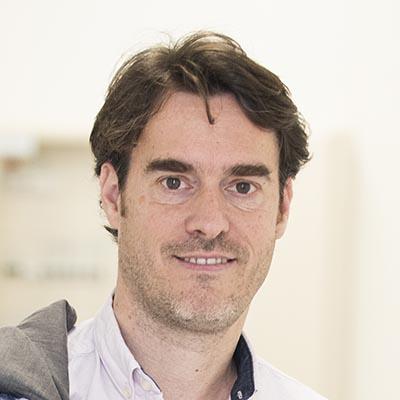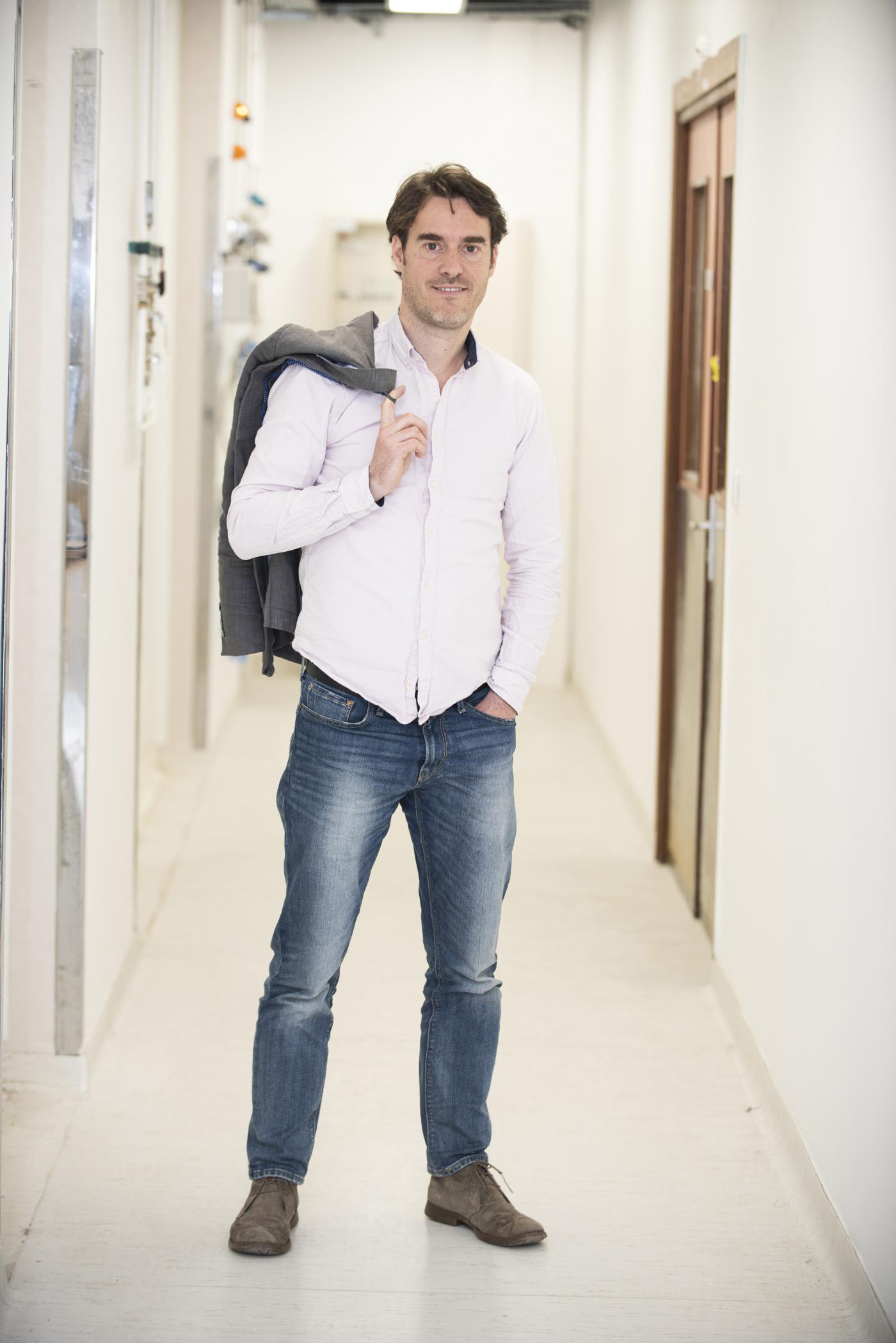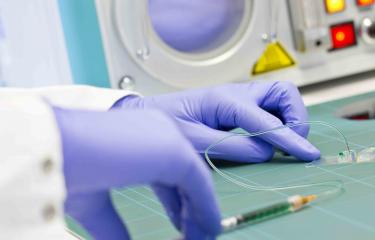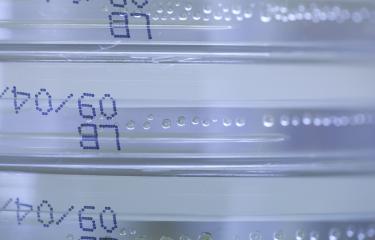Thomas Gregor, biophysicist and elected EMBO member, set up his Physics of Biological Functions Unit at the Institut Pasteur (in Paris) and published three papers in high-impact journals in the span of twelve months (in 2018-2019). We sat down with him and a cup of tea to learn a little bit more about his passion for science.
In October 2023, Thomas Gregor has been awarded an ERC Synergy Grant for the DynaTrans project concerning Transcription in 4D: the dynamic interplay between chromatin architecture and gene expression in developing pseudo-embryos.
A German national who had been running a lab and teaching at Princeton University before moving to France, Gregor says his work involves “how the complicated processes of living matter can be explained by principles of physics and described by mathematics.” In pursuit of these ideas, he has touched down in several disciplines – math, physics, chemistry and biology – as well as in several countries, including Japan and the United States. He came to Paris at the end of 2017 to take his research to the next phase in the Developmental and Stem Cell Biology Department.
Having advanced understanding of cell fate determination by studying fruit flies, and leading a lab for ten years, he brings to the Institut Pasteur the expertise of an experienced researcher with a well-developed career. At Pasteur he looks forward to applying the technologies he developed to more complex systems, such as mammals and organoids. The Institut Pasteur promises to be a conducive environment for this next phase of his work.
“There have recently been three highlights in my career, with the successive publication of three papers – the fruits of long-term endeavors,” says Gregor. The papers correspond to several aspects of cellular fate determination in the early fly embryo:
- the precision with which DNA reads information from a genetic network,
- how this information is transmitted to a long-distance target gene, and then to the promoter of that gene, and
- how information is transformed into a transcriptional output.
Although written and released within a 1-year span when Gregor first arrived in Paris, the papers were based on the results from many years of work with his colleagues, based primarily at Princeton.
Gregor’s successful recruitment to the Institut Pasteur was a new stop in his international career. Concerning the international move for him and his family, Gregor says that they welcomed the change, calling France, “a great place for research and a great place to raise a family.”
Echoing this geographic fluidity, Gregor’s work also embraces a crossing of borders. His research involves “the interface between physics and biology” and draws on his studies in advanced mathematics and chemistry. “I lack roots in a way. It can sometimes feel like a weakness,” he says. But the connections he has made between these disciplines – for example his team’s development of mathematical models to describe life processes –in reality reflect developments in modern biology, where mathematics plays a central role (we talk of quantitative biology) and is a tremendous asset in a field where interdisciplinarity is an absolute necessity.
The strengths of this approach have gotten a good deal of recognition, notably in an article in Quanta magazine, which cites one of Gregor’s papers recently published in Cell. In this work he showed that cellular differentiation processes are much more efficient from the start than previously thought. This insight stemmed from investigations into one of the key questions his team works on: how a cell in a developing organism knows where it is and what kind of function it has to perform.
Before questioning the fate of cells, the younger Gregor had already questioned his own life’s purpose. Born in Western Germany’s Rhineland into a conventional German family with a passion for cooking and football, but not much intellectual curiosity, it was not a given that he would go into academia. “I was a whirlwind of energy growing up. I didn’t really fit in,” he says.

You should seize opportunities to meet with people whose ideas you find interesting and follow your scientific passions.
But once at school he discovered a passion for science and math. He enjoyed the challenge and benefitted from the fact that he could work independently until he found a solution. His enthusiasm and self-discipline were marked even at this young age. “If the homework was not correct, I could not go back to school. I really could not,” he says.
He welcomed all learning opportunities at school, often moving through material faster than it could be provided. He also made his own opportunities and sought out additional ways to learn. His math teacher regularly let him take the lead in explaining materials to struggling classmates. In addition to being beneficial for them, helping the class progress was also effective for moving on to the new topics he craved. “But it did not always make me the most popular kid in class,” he admits with adult hindsight.
Thomas knew math and science was a career option thanks to the list of professors in the author sections of his text books. His direction was further catalyzed by “an epiphany” he had following a religion class. The topic of the class was the catholic notion of the holy ghost and during the discussion Thomas politely challenged the teacher on the idea. For his own peace and comfort and to avoid disrupting his classes, the teacher preferred to let Thomas read and do math during classes from then on.
This was a satisfactory turn of events for Gregor. Now he would have more time to explore his text books. Since life was ephemeral, he’d better put his time to the best use possible. He gave this some thought.
“For contributing to humankind, medicine seemed like a good path,” he reasoned and he considered taking it. On the other hand, if he chose a career in scientific research he “could potentially help more people, because advancements made in science can have practical applications in other areas, including medicine.” Indeed, the discoveries of today can generate new tools for doctors, creating even more health benefits for humankind going forward.
Gregor very much looked to Einstein as inspiration – someone whose theory of gravitation was proven correct 100 years after its conception, illustrating nicely the way a dedicated scientist can contribute to society. Indeed, research was a way of using your talent and time to serve others.
This conviction, and his fundamental excitement about the work, set him on his way. He had some moments of doubt, for example when he arrived at the University of Geneva to do a masters in Physics – the differences in German and Swiss curriculum meant he was a good year behind his classmates, and he had to switch from German to French. The first year was challenging, but as time went on he found himself keeping pace with the top students, an especially gifted group led by a student who would later earn a Field’s Medal. Confidence in his abilities began to solidify, his choice felt legitimate, and once he got his degree he was ready for more. His second masters took him out of Switzerland and to the US to study chemistry at Princeton. A professor with whom he shared an intellectual kinship was also going.
He immersed himself in American academic culture and the unbeatable opportunities and synergy it offered. For him Princeton University was an ideal confluence of the right people in the right place at the right time. It was there that he got his footing. For his PhD he applied the principles of physics and mathematical language to biological systems previously believed too “messy” for such an approach. He formed a team of three professors, two physicists (one theorist and one experimentalist) and one biologist, and together they embarked on a long-term partnership which led to one of the three papers mentioned earlier.
Now at the Institut Pasteur, and back in Europe, he is personally and professionally poised to create the next chapter. He is very forthright about the fact that he is glad to be raising his three children here in France in collaboration with his spouse who is also a scientist. His appreciation of his scientific circumstances – including the team he’s assembling – is also something he is quick to acknowledge. He and his team are currently designing and assembling microscopes for observing single cells or even single molecules, but on more complex specimens than the fruit flies studied previously. The next steps will doubtless lead to new scientific questions.
With all that he has already accomplished, Gregor can speak with both perspective and conviction about his path and offer inspiration to junior researchers just starting out: “Atypical career paths that are less linear are often the most fulfilling”, he concludes. “You should seize and provoke opportunities to meet with people whose ideas you find interesting and follow your scientific passions.”

Photo credit: François Gardy, Institut Pasteur
Sources
Optimal Decoding of Cellular Identities in a Genetic Network, Cell, February 7, 2019
Petkova MD1, Tkačik G2, Bialek W3, Wieschaus EF4, Gregor T5.
1. Joseph Henry Laboratories of Physics and the Lewis-Sigler Institute for Integrative Genomics, Princeton University, Princeton, NJ 08544, USA; Program in Biophysics, Harvard University, Cambridge, MA 02138, USA.
2. Institute of Science and Technology Austria, Am Campus 1, 3400 Klosterneuburg, Austria.
3. Joseph Henry Laboratories of Physics and the Lewis-Sigler Institute for Integrative Genomics, Princeton University, Princeton, NJ 08544, USA.
4. Department of Molecular Biology and Howard Hughes Medical Institute, Princeton University, Princeton, NJ 08544, USA.
5. Joseph Henry Laboratories of Physics and the Lewis-Sigler Institute for Integrative Genomics, Princeton University, Princeton, NJ 08544, USA; Department of Developmental and Stem Cell Biology, UMR3738, Institut Pasteur, 75015 Paris, France. Electronic address: tg2@princeton.edu.
Dynamic interplay between enhancer-promoter topology and gene activity, Nature Genetics, September, 2018
Chen H1, Levo M1, Barinov L2, Fujioka M3, Jaynes JB3, Gregor T4,5,6.
1. Lewis-Sigler Institute for Integrative Genomics, Princeton University, Princeton, NJ, USA.
2. Department of Molecular Biology, Princeton University, Princeton, NJ, USA.
3. Department of Biochemistry and Molecular Biology, and the Kimmel Cancer Center, Thomas Jefferson University, Philadelphia, PA, USA.
4. Lewis-Sigler Institute for Integrative Genomics, Princeton University, Princeton, NJ, USA. tg2@princeton.edu.
5. Joseph Henry Laboratories of Physics, Princeton University, Princeton, NJ, USA. tg2@princeton.edu.
6. Department of Developmental and Stem Cell Biology, Institut Pasteur, Paris, France. tg2@princeton.edu.
Diverse Spatial Expression Patterns Emerge from Unified Kinetics of Transcriptional Bursting, Cell, October 18, 2018
Zoller B1, Little SC2, Gregor T3.
1. Joseph Henry Laboratories of Physics and the Lewis-Sigler Institute for Integrative Genomics, Princeton University, Princeton, NJ 08544, USA.
2. Department of Molecular Biology and Howard Hughes Medical Institute, Princeton University, Princeton, NJ 08544, USA; Department of Cell and Developmental Biology, Perelman School of Medicine, University of Pennsylvania, Philadelphia, PA 19104, USA.
3. Joseph Henry Laboratories of Physics and the Lewis-Sigler Institute for Integrative Genomics, Princeton University, Princeton, NJ 08544, USA; Department of Developmental and Stem Cell Biology, Institut Pasteur, 75015 Paris, France. Electronic address: tg2@princeton.edu.





